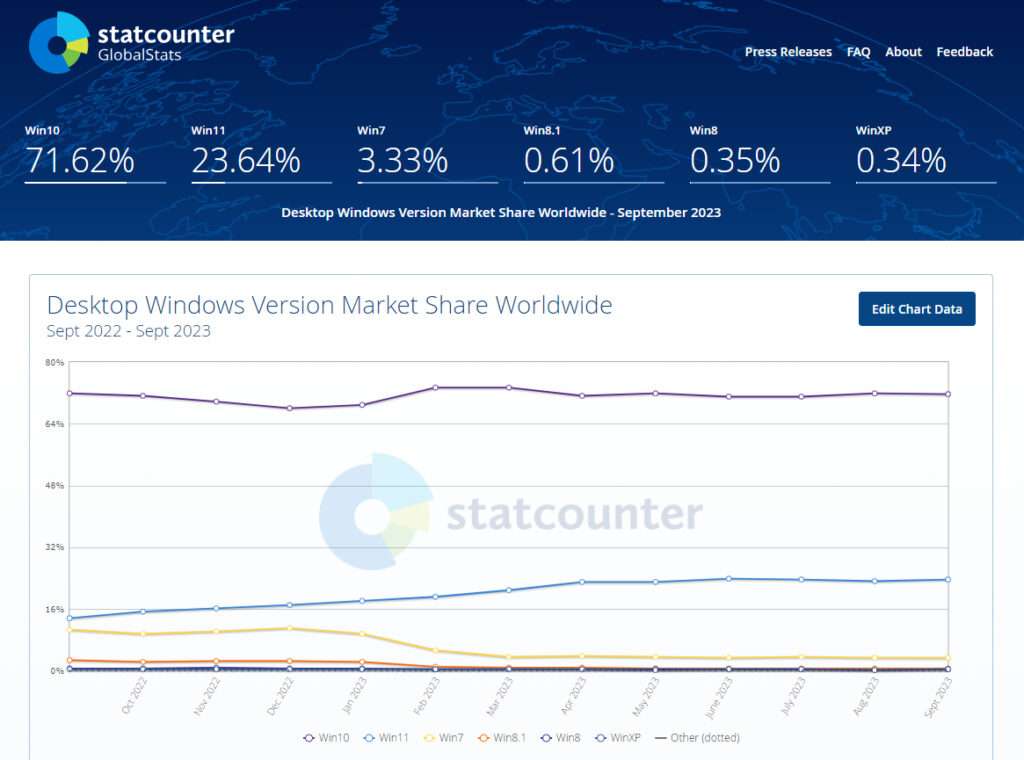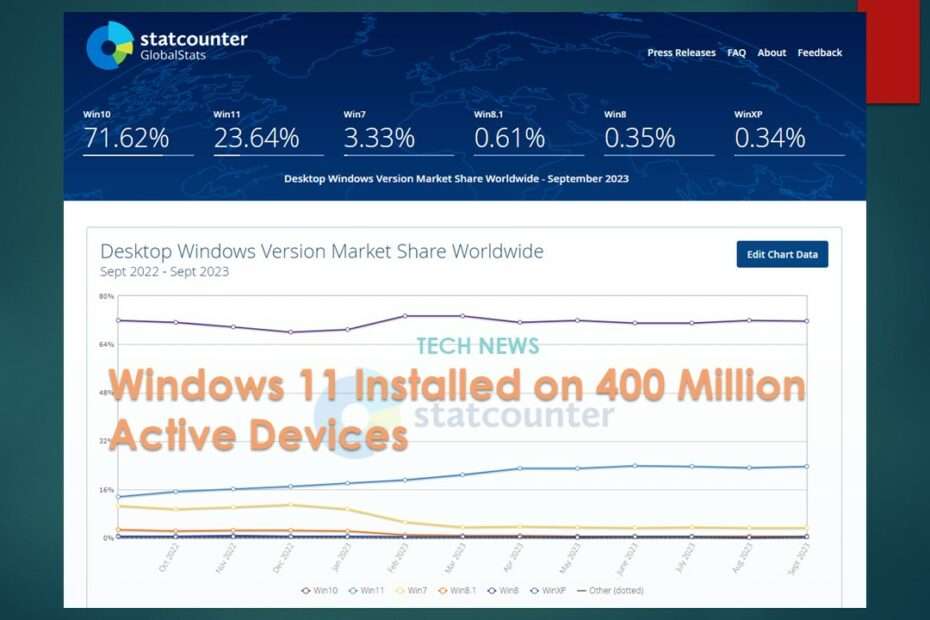Microsoft’s latest operating system, Windows 11, has exceeded expectations in terms of adoption since its release in October 2021. According to sources familiar with the matter as reported by Windows Central, Windows 11 has now reached a significant milestone, being actively used on over 400 million devices each month. This data, obtained from internal sources, indicates that the user base for Windows 11 continues to grow. Furthermore, Microsoft has high expectations for the OS’s future, as they project to achieve a remarkable 500 million active monthly devices by early 2024, highlighting the ongoing success of the new operating system.
This substantial growth in Windows 11’s user base signifies a strong reception and adoption rate, showcasing that the OS has garnered significant attention and is becoming the preferred choice for many users in the Windows ecosystem. With Microsoft’s ambitious target of reaching 500 million active monthly devices, it’s clear that Windows 11 is on a trajectory to play a pivotal role in the company’s overall ecosystem and future plans.
The current installation rate of Windows 11 may come as a surprise to some, but when compared to earlier operating systems, it doesn’t stand out as exceptionally rapid. To provide context, it took approximately 14 months for Windows 10 to achieve the milestone of 400 million active installs. This illustrates that the pace of adoption for Windows 11 is indeed notable, yet it doesn’t outpace its predecessor in the Windows family.
In a broader historical perspective, Windows 11’s progress becomes even more apparent. Windows 10, which was widely successful, took just shy of five years to reach the remarkable milestone of one billion active installs. This extended timeline underscores the incremental nature of growth in the Windows user base, emphasizing that while Windows 11 is making impressive strides, it’s following a trajectory of adoption that is consistent with previous Windows operating systems.
In the desktop Windows ecosystem, recent data from StatCounter highlights the continued dominance of Windows 10, which currently holds a substantial 71.62 percent share of the market. Windows 11, the latest offering from Microsoft, is making steady inroads and now accounts for 23.64 percent of all Windows desktop installations, reflecting a significant portion of the user base embracing the new operating system. Meanwhile, Windows 7, which once held the front-runner position, has seen a substantial decline and now only maintains a modest 3.33 percent market share. In contrast, Windows XP, an even older version, has nearly faded into obscurity, registering a mere 0.34 percent share, showcasing the evolving landscape of Windows OS usage.

These statistics provide valuable insights into the evolving desktop Windows landscape, indicating a gradual shift towards Windows 11 while Windows 10 continues to command a majority share. The dwindling presence of older Windows versions like Windows 7 and Windows XP underscores the importance of staying up-to-date with operating system choices for both security and functionality in the modern computing environment.
Windows 11 faced considerable challenges right from its launch. In contrast to the favorable conditions when Windows 10 was introduced, the latter was promoted alongside a free upgrade offer and an extensive marketing campaign that generated substantial buzz. In contrast, Windows 11 didn’t receive the same level of attention, and it started with a disadvantage due to its requirement for a Trusted Platform Module (TPM), which limited its compatibility with certain older hardware.
The absence of a free upgrade promotion and the constrained hardware requirements set by TPM initially posed hurdles for Windows 11’s adoption. These factors, combined with the expectations set by Windows 10’s successful launch, made it a more challenging endeavor for Windows 11 to gain the same level of traction and attention within the Windows user base.
Looking ahead, the tech world has been abuzz with speculation about what the future holds for the Windows operating system. A notable development came to light when Intel’s Chief Financial Officer (CFO) hinted at a “Windows Refresh” expected in 2024 during an announcement earlier this month. Although the term “Windows 12” was not explicitly mentioned, the general consensus among experts is that this “Windows Refresh” alluded to by the Intel executive is likely an indirect reference to the upcoming release of Windows 12. This tantalizing piece of information has piqued the interest of Windows enthusiasts and industry insiders, as they eagerly anticipate the next chapter in the evolution of Microsoft’s flagship operating system.
The notion of a “Windows Refresh” in 2024 has set the stage for speculation and excitement in the tech community. While the exact details of what Windows 12 will entail remain shrouded in mystery, it is clear that Microsoft is actively working on innovations to shape the future of their operating system, and 2024 is poised to be a pivotal year for the Windows ecosystem.
Amidst the anticipation surrounding the next iteration of Windows, rumors that circulated during the summer hinted at its potential arrival in the fall of 2024. These speculations come with exciting prospects, as they suggest a range of new features that could accompany this upcoming release. One intriguing detail that has surfaced is the inclusion of a floating taskbar, offering a dynamic and user-friendly interface to enhance the Windows user experience. Additionally, reports have also mentioned a feature involving multiple “states” of the operating system residing on distinct partitions within the storage drive. This innovative approach could potentially streamline the process of updating the OS, ensuring a smoother and more efficient experience for end users.
These rumors provide a glimpse into the possible advancements and improvements Microsoft is exploring for the future of Windows. The introduction of a floating taskbar and the concept of multiple OS states are indicative of the company’s commitment to evolving the Windows platform and enhancing user functionality, setting the stage for an exciting and transformative release in 2024.
Maybe you liked this article?

